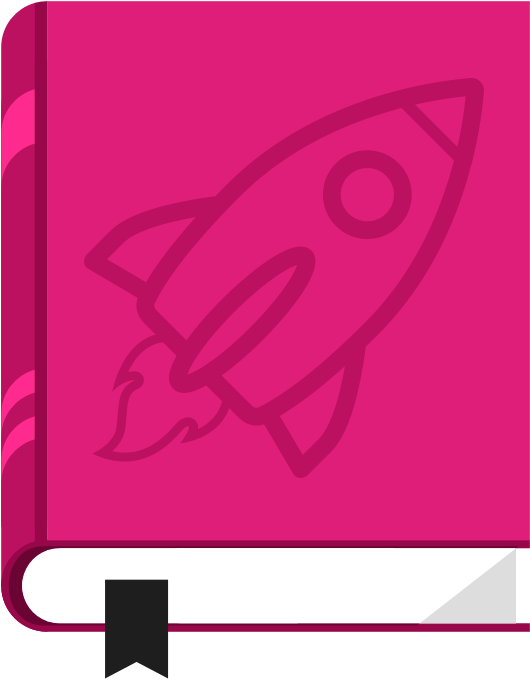Chapter 2: Planning Your Campaign
Successful campaigns require great planning. We’ll walk you through the key elements of a campaign plan.
A thoughtful, well-timed plan will give your campaign its best shot at success. To help you build your roadmap, we’ll review all the elements of an effective pre-campaign plan.
STEP ONE: THE ROADMAP
Prep for success with research and a clear plan
If you look at the crowdfunding pages for some of Indiegogo’s most successful campaigns, you’ll see entrepreneurs who met and exceeded their funding goals, products that have been adopted into national retail chains and films that have taken the festival circuit by storm. Behind every campaign is a thoughtful plan for every stage of the project. A great idea is just the start—the most successful Indiegogo entrepreneurs are typically deliberate with every aspect of their timing. We’ve assembled some of the most important tips here to help you launch strong and finish even stronger.
STEP TWO: THE FIRST 30%
Launch with your first 30% already in place
After helping thousands of entrepreneurs and crowdfunding campaigns, we’ve found that 30% is an important number to remember. Campaigns that reach 30% of their goal in the first two days are much more likely to exceed their ultimate crowdfunding goal. By racing quickly to 30%, you build important early momentum and give prospective backers confidence that your campaign is on track for success. (Stay tuned—in chapter 3 we’ll cover valuable tips for growing your audience and reaching 30%.)
STEP THREE: GOALS
Set attainable goals and think in stages
Setting your goal can be the hardest part of starting a campaign, and there are a variety of strategies to evaluate, including funding your project in stages. Most campaigners that raise millions of dollars start by launching a smaller campaign, and grow their audience from there. For example, the TrackR team ran multiple crowdfunding campaigns on their way to launching the TrackR Bravo, a coin-sized device for tracking lost valuables that attracted more than $1.7 million in funding on Indiegogo.

The team behind the Bravo proved that a thoughtful, staged approach to crowdfunding can yield big returns.
Other entrepreneurs have found success by setting a low goal, which can help build confidence with backers early in the campaign. If you want to raise $25,000, for example, consider instead aiming for $20,000 and making $25,000 your stretch goal. Many entrepreneurs use a combination of these strategies to reach their ultimate goal.
STEP FOUR: EMAIL STRATEGY
Use email outreach early and often
Never underestimate the power of email to excite and rally your fans. Our research indicates that the average conversion rate from email is 34% higher than other forms of outreach, making it an ideal method for engaging supporters. Compared with social media posts or public relations efforts, email allows you to quantify how many potential supporters were reached with your message and how many responded, letting you know exactly if your engagement efforts have succeeded. There are a number of free email tools like MailChimp and Gmail that you can use to start your email outreach.
STEP FIVE: TEAM & TIMING
Build a team to divide and conquer on tasks
Make no mistake: crowdfunding can require a lot of ongoing work, perhaps even on par with a full-time job, so make sure you have enough people-power available to make the most of the experience. Whether you’re working with business partners or simply family and friends, a well-organized team can help amplify your message by posting to social media, responding to inquiries or updating your campaign page. Additionally, work closely with your team to set aside ample time in the planning stages. As a general rule, reserve at least 60 days to plan the campaign and 30 days to manage the campaign after launch. With a campaign team on board, you’ll be able to achieve and manage more in those 90 days than you could alone.
STEP SIX: FULFILLMENT
Strategize and budget for fulfillment pre-campaign
Even the most successful crowdfunding campaign can stumble if the owners forget to create a workable plan for fulfillment. When your campaign finishes, you’ll need to get products to your backers, and the cost of shipping can add up quickly against the total funds you’ve raised. On average, shipping costs should account for 10-15% of funds raised, 20% max, depending on item category.
Plan for fulfillment by thinking about where your backers are likely to be, then do your research about the best (and most cost-effective) ways of shipping your products to them. Our shipping partner, Easyship, has a shipping rates calculator that can help you estimate how much it’ll cost to fulfill your campaign and give you a variety of courier options so that you can build a fulfillment strategy that works for your campaign. Then, you can build these costs into your perks to ensure your campaign remains profitable.
FEATURED RESOURCE
Don’t miss a step: Get the Pre-Launch Prep Kit
Includes detailed tips and tricks for planning your campaign
Step-by-step guidance for the 2 months leading up to your launch
© 2016 Indiegogo, Inc. All Rights Reserved


